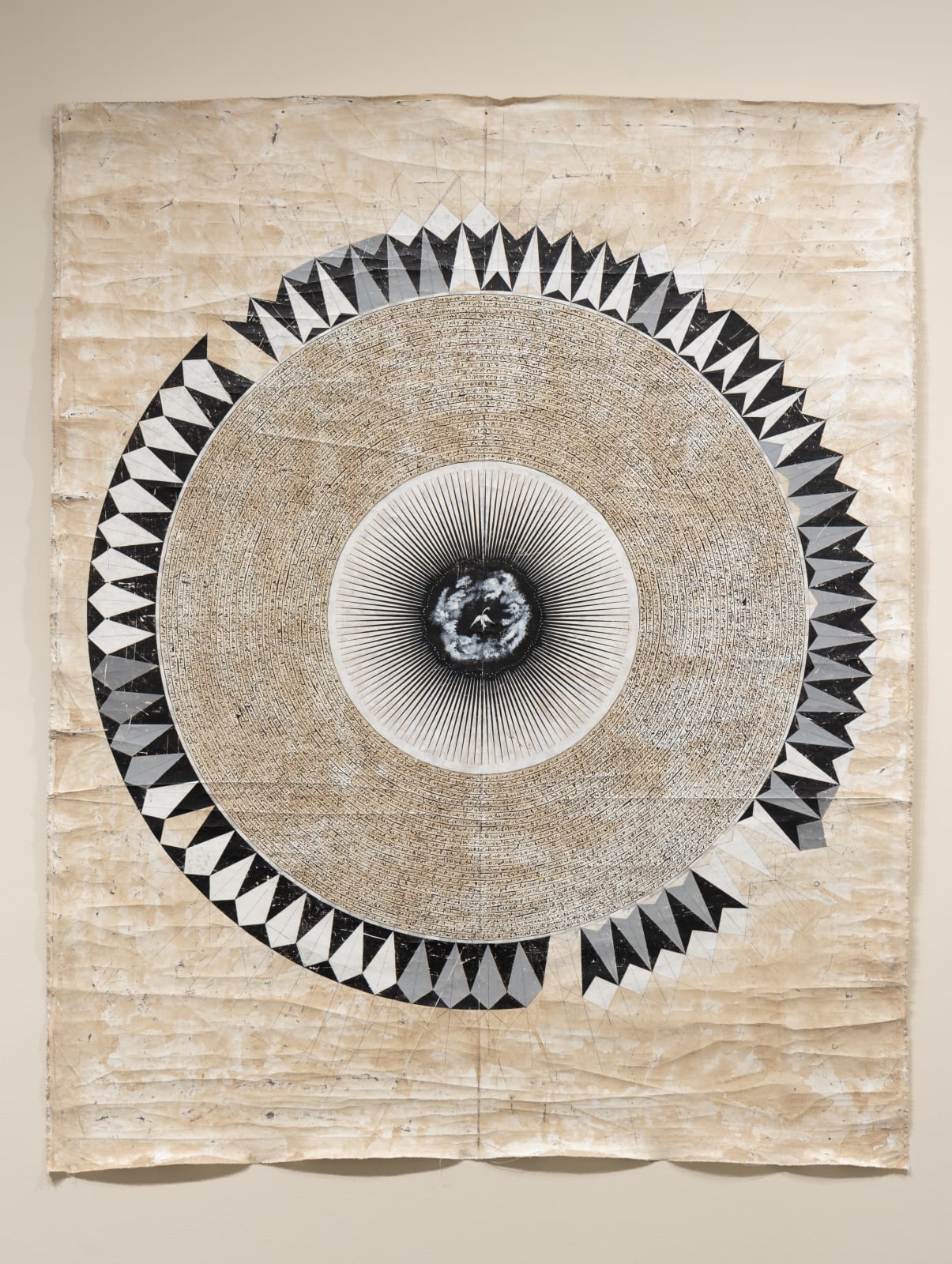-
Artworks
Mohamed Monaiseer Egyptian, b. 1989
Barzakh #6, 2024Acrylic and ink on cotton fabric195 x 160 cm
76 3/4 x 63 inCopyright The Artist$ 12,000.00SoldFurther images
Literature
Monaiseer’s practice combines the architectural and artisanal motifs of the Islamicate world with deeply personal reflections on personal and collective loss, thwarted revolutionary aspirations, and universal themes of enclosure and migration. In Limen, these threads converge. Monaiseer’s work transcends specific times or places, resonating universally across moments and contexts.
For the artist the barzakh is fertile ground for examining personal and collective loss, migration, colonialism, and ecological degradation. The work engages liminal states through material and conceptual experimentation, it reflects barzakh as a site of renewal, connecting spiritual and ecological cycles.







